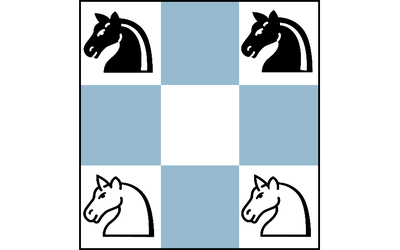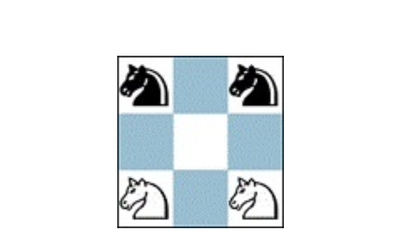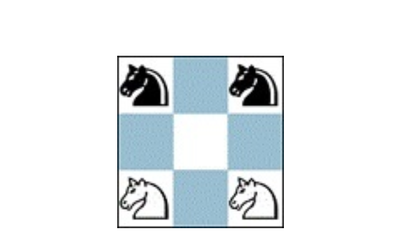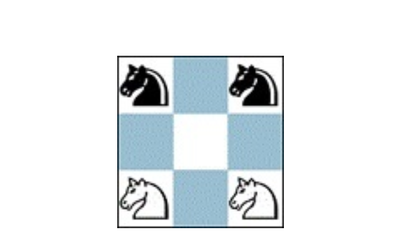
jomega's chess courses
My Beginner Course Implemented With Lichess Studies
The Beginner CourseContinued from
jomega's Blog • My Chess Courses Implemented With Lichess Studies • lichess.org
Today I'm going to talk about the Beginner Course. However, first I want to say some things that apply to all my courses.
Content and Style
The courses are written assuming that a goal is to become a strong chess player. A strong chess player does not want to have gaps in their knowledge; hence the courses tend to be complete in their coverage of chess topics.
The content, for the most part, is the same content you'd find in the vast chess literature. The references to the chess literature I used are listed in the Beginner course and cited throughout all the courses.
The style of the courses is a combination of the authority style and the demonstrator style. They are the authority style in that they are like lectures with a one-way discussion on a topic. They are demonstrator style in that they use the Lichess study facilities to provide demonstrations and activities.
Learning order
There are multiple learning orders for the material. If you have a mentor, they can help you plan a learning order. The courses are written so that almost always things are defined before being used, presented in order of easiest first, and "building blocks" are given first. If you do the topics in a different order than the linear order, then you'll have to backtrack more often. By linear order, I mean that any time there is a link in the studies you should probably follow it first! To get a global view, use the table of contents.
How long does it take to learn the material in the Beginner Course?
The answer is that it varies widely, but I'd say with 5-10 hours of study and playing a week, it will take between 3 to 4 years for someone starting as a complete novice. I consider beginners may be rated as high as 1300 ELO.
What might be different than other courses for beginning chess players?
A concept that would be difficult to find explicitly in the chess literature, but that is covered in these courses, is that of "static tactical analysis" as realized by the construction of the "attack/defense network". This is a method of understanding what others might call "tactical patterns". It is a method of converting something that starts off as being seen dynamically into something that is seen statically. Typically in the literature, "static analysis" is a phrase only applied to strategic considerations.
There is an emphasis in the courses on avoiding calculation when possible. There are several reasons. If you are in the mindset of calculating then you are not in the mindset of seeing a pattern. Also, your move time is limited and you want to be able to see as much as possible without calculating.
As the Beginner Course starts talking about piece movement, the following sentence gets repeated for each piece:
Endeavor to visualize where the <piece> can move in 1, 2, 3, or more moves. This will be invaluable to your progress in chess.
<piece> is replaced by the name of the piece being learned. This is incredibly important! This skill is the beginning of being able to visualize.
For the Knight, it is important to be able to see all the places it can move (in one move) all at once. Not as an L-shape move, as some teach it, but as a wheel or clock.
As soon as it is understood that the rules only allow Knights to move through other pieces, it is important to start visualizing the movements of the other pieces as if they could move through other pieces. This is the basis of the concept of indirect attack/defense. It is absolutely necessary to understand this to be able to construct the most elementary attack/defense network.
Layered as concepts above the rules are the concepts of "roles" of the pieces. The four most basic roles are attack/defend/block/restrict. Attack and defense are generalized to include indirect attacks and defenses. The Beginner Course starts talking about these roles as soon as the movements of the Rook and King are introduced. This is definitely old-school; teaching chess concepts through the elementary endgames.
The concepts of key squares and corresponding squares are emphasized in the understanding of King and Pawn endgames; though opposition and Nimzowitsch's methods are also taught.
Internalizing
All of these ways of understanding chess are just that - ways of understanding. Once you have internalized the patterns, you just know what to do! It is analogous to knowing how to pronounce a word - whatever understanding methods you used to learn how to pronounce the word, you don't need those methods anymore once you know how to pronounce the word.
Beginner Course
Beginner Course Table of Contents
https://lichess.org/study/Ztgx3vJq/
Next Blog in This Series
In the next blog in this series I'll give an overview of the Intermediate Course.
Table of Contents for all my studies
I have written many other Lichess studies. All my studies are cross linked. Here is a table of contents for all my studies.
Jomega Studies Table of Contents (lichess.org)
I hope you enjoy this blog series. Likes are really appreciated.
More blog posts by jomega

Chess Structures At A Glance
Chess Structures based on the book Chess Structures: A Grandmaster Guide by Mauricio Flores Rios, an…
An Index for All My Studies
Jomega study index.
The unintended consequences of rule changes.
Capturing the intent of rule changes is not easy.